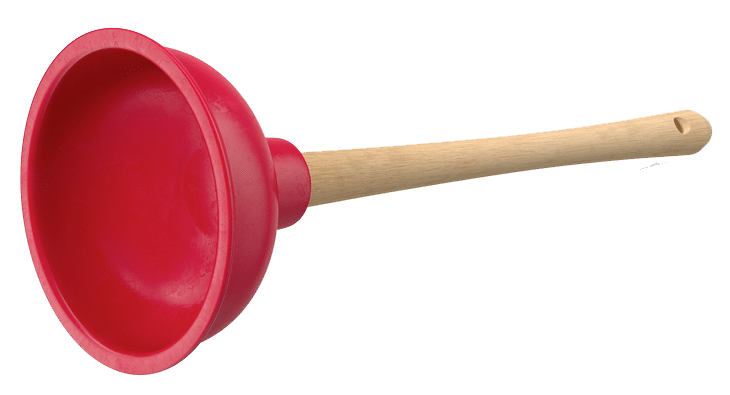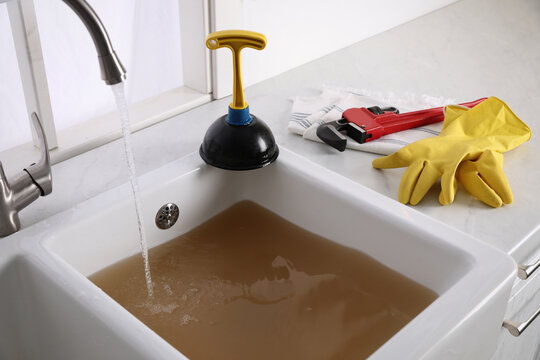Using Plunger and Drain Cleaner: Top Techniques
Call Us NowThe writer is making a number of good pointers about Tips on How to Effectively Use a Plunger as a whole in this great article down the page.

Intro
Correct maintenance of household drains pipes is necessary for avoiding clogs and making certain smooth water circulation. One of the secret tools in every house owner's toolkit is the plunger, along with various drain cleansers developed to tackle stubborn clogs efficiently. This write-up checks out just how to make use of plungers and drainpipe cleaners properly to keep your drains pipes moving freely.
Section 1: Recognizing Plungers
Kinds of Plungers
There are a number of kinds of bettors offered, each made for various sorts of drains pipes and clogs. The most common kinds include cup bettors, flange plungers, and accordion plungers.
Exactly How Plungers Job
Plungers deal with the principle of creating stress and suction to displace blockages. When effectively used over a drainpipe, they create a vacuum that can take out debris or separate obstructions.
Picking the Right Plunger
Picking the ideal plunger relies on the kind of drain and the nature of the obstruction. Cup bettors are suitable for sinks and tubs, while flange bettors are better suited for bathrooms due to their design.
Typical Blunders with Plungers
Preventing these errors makes certain effective plunging: incorrect seal around the drain, insufficient force, and unclear surrounding particles.
Area 2: Making Use Of Plungers Properly
Prep work
Before diving, ensure the plunger covers the drain totally and forms a limited seal. Clear any kind of noticeable debris around the drainpipe opening.
Method
Beginning with mild diving motions to build suction. Rise stress progressively, making use of a steady rhythm. Repeat as required until the drainpipe removes.
Troubleshooting Tips
If plunging does not work, try adjusting the seal, using oil jelly for a much better seal, or utilizing a different type of bettor.
Section 3: Comprehending Drain Cleaners
Kinds Of Drain Cleaners
Drain pipes cleaners can be chemical or chemical. Chemical cleaners make use of strong chemicals to dissolve obstructions, while enzymatic cleansers use natural enzymes to break down raw material.
Just How Drainpipe Cleaners Work
Chemical cleansers react with blockages to liquify them, while chemical cleansers break down organic products like hair and oil without harming pipelines.
Security Factors to consider
Constantly wear handwear covers and eye defense when using chemical drain cleaners. Guarantee sufficient air flow and adhere to supplier guidelines meticulously.
Eco-Friendly Alternatives
Consider using vinegar and cooking soft drink or enzyme-based cleansers for eco-friendly options that are more secure for pipes and the environment.
Area 4: Utilizing Drain Cleaning Company Efficiently
Application Techniques
Pour chemical cleansers straight into the drainpipe opening. Permit them to help the recommended time prior to purging with warm water. Chemical cleaners need to sit over night.
Safety measures
Avoid blending different kinds of cleansers, as this can produce hazardous fumes. Never make use of chemical cleaners combined with a plunger, as splashing can occur.
Managing Persistent Clogs
For consistent obstructions, consider using a plumbing snake or calling an expert plumbing professional to prevent damage to pipes.
Final thought
Finally, comprehending just how to utilize plungers and drainpipe cleansers properly is crucial for keeping healthy and balanced plumbing systems. By choosing the right devices and methods, property owners can tackle small blockages and stop major pipes problems down the line.
How To Properly Use A Plumbing Snake To Clear Drains
When any drain clogs in our home arise, we tend to gravitate toward the plunger and little else. In cases where the plunger and its vacuum-created pressure are not able to clear clogs, many immediately move to harmful chemicals or simply call their plumber to fix the issue.
we’re happy to help with all drain cleaning needs and concerns. This includes informing you on a few other home remedies you may have at your disposal for minor to moderate clogs, one of which is the use of a plumbing snake. Many people have never used one of these before – let’s go over the steps to take when your drain clogs and you have a plumbing snake available.
Attempt Plunger Use
The first step here, as we noted above, should indeed be to grab your plunger when you notice a drain clog and attempt to resolve it this way. If you’re unsure how to use a particular type of plunger, our plumbers can answer any questions you have. If this doesn’t do the trick, however, you move on to the snake.
Locate And Prepare Snake
A plumbing snake is a metal or plastic device that’s generally about a quarter of an inch thick. It’s design with significant extensions, meant to reach down into your clogged drain and push the clog out. Snakes also contain drain augers that will latch onto and push stubborn blockages.
If your plunger doesn’t clear a clog, locate your snake and bring it to the drain in question. We also recommend keeping a bucket nearby to collect the clog once you pull it out, plus we’d advise wearing goggles and possibly protective gloves.
Feed Snake
Once you’re ready to go, feed the snake slowly down the drain, using the crank device it comes with to keep it moving until it finds the clog. Once this happens, much of the clog will be latched onto the coil so you can pull it out, while the rest will simply break up and flow downward.
Detach Debris
Remove the snake slowly from the drain, and once you’ve done so, pick off any debris that’s stuck to the coil. This is another area where wearing gloves is a must.
Flush Drain
Finally, take a few minutes to ensure the snake has done its job correctly. If you’ve been using it on a toilet, flush the toilet a couple times and make sure everything flows well. If you’ve used it on a different drain, flush it with some room temperature water.
https://www.mybuddytheplumber.com/blog/how-to-properly-use-a-plumbing-snake-to-clear-drains/

Application Techniques
Pour chemical cleansers straight into the drainpipe opening. Permit them to help the recommended time prior to purging with warm water. Chemical cleaners need to sit over night.
Safety measures
Avoid blending different kinds of cleansers, as this can produce hazardous fumes. Never make use of chemical cleaners combined with a plunger, as splashing can occur.
Managing Persistent Clogs
For consistent obstructions, consider using a plumbing snake or calling an expert plumbing professional to prevent damage to pipes.
Final thought
Finally, comprehending just how to utilize plungers and drainpipe cleansers properly is crucial for keeping healthy and balanced plumbing systems. By choosing the right devices and methods, property owners can tackle small blockages and stop major pipes problems down the line.
How To Properly Use A Plumbing Snake To Clear Drains
When any drain clogs in our home arise, we tend to gravitate toward the plunger and little else. In cases where the plunger and its vacuum-created pressure are not able to clear clogs, many immediately move to harmful chemicals or simply call their plumber to fix the issue.
we’re happy to help with all drain cleaning needs and concerns. This includes informing you on a few other home remedies you may have at your disposal for minor to moderate clogs, one of which is the use of a plumbing snake. Many people have never used one of these before – let’s go over the steps to take when your drain clogs and you have a plumbing snake available.
Attempt Plunger Use
The first step here, as we noted above, should indeed be to grab your plunger when you notice a drain clog and attempt to resolve it this way. If you’re unsure how to use a particular type of plunger, our plumbers can answer any questions you have. If this doesn’t do the trick, however, you move on to the snake.
Locate And Prepare Snake
A plumbing snake is a metal or plastic device that’s generally about a quarter of an inch thick. It’s design with significant extensions, meant to reach down into your clogged drain and push the clog out. Snakes also contain drain augers that will latch onto and push stubborn blockages.
If your plunger doesn’t clear a clog, locate your snake and bring it to the drain in question. We also recommend keeping a bucket nearby to collect the clog once you pull it out, plus we’d advise wearing goggles and possibly protective gloves.
Feed Snake
Once you’re ready to go, feed the snake slowly down the drain, using the crank device it comes with to keep it moving until it finds the clog. Once this happens, much of the clog will be latched onto the coil so you can pull it out, while the rest will simply break up and flow downward.
Detach Debris
Remove the snake slowly from the drain, and once you’ve done so, pick off any debris that’s stuck to the coil. This is another area where wearing gloves is a must.
Flush Drain
Finally, take a few minutes to ensure the snake has done its job correctly. If you’ve been using it on a toilet, flush the toilet a couple times and make sure everything flows well. If you’ve used it on a different drain, flush it with some room temperature water.
https://www.mybuddytheplumber.com/blog/how-to-properly-use-a-plumbing-snake-to-clear-drains/

Do you appreciate reading about How to Unclog Your Sink with a Plunger? Put feedback directly below. We'd be delighted to hear your insights about this review. In hopes to see you back again soon. Loved our posting? Please share it. Help somebody else check it out. Thank you for your time spent reading it.
Call Today